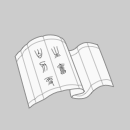
飞行器系统概论(第2版)
¥ 58.85 5.4折 ¥ 108 全新
库存3件
作者唐胜景
出版社国防工业出版社
ISBN9787118124675
出版时间2021-07
装帧平装
开本16开
定价108元
货号1202809408
上书时间2024-12-12
- 在售商品 暂无
- 平均发货时间 7小时
- 好评率 暂无
- 最新上架
商品详情
- 品相描述:全新
- 商品描述
-
商品简介
本书系统地介绍了飞行器系统的基本概念和基本原理,主要包括空间环境、力学环境、飞行原理、系统组成、推进系统、外形与结构、制导与控制系统、地面设备与发射方式、有效载荷等。同时,对飞行器设计与研究的基本阶段、研究方法、典型试验及其发展等进行了介绍。本书再版修改、补充了较新的相关内容。
本书可作为高等学校有关专业教材,也可供从事飞行器设计、研究、试验和管理的相关人员使用参考。
目录Chapter 1 Brief introduction to flight vehicles
1.1 Basic concepts
1.2 Overview of flight vehicles
1.2.1 Rockets
1.2.2 Missiles
1.2.3 Air vehicles
1.2.4 Spacecrafts
1.2.5 Hypersonic flight vehicles
1.3 Development history of flight vehicles
1.3.1 Flight vehicle exploration
1.3.2 Typical examples of aeronautics & astronautics
1.3.3 Prominent figures in aerospace
Questions
Words and phrases
References
Chapter 2 Flight principles of flight vehicles
2.1 Rocket motion
2.1.1 Rocket movement
2.1.2 Rocket motion equation
2.1.3 Multistage rocket theory
2.2 Flight environment
2.2.1 Earth atmosphere
2.2.2 Near space
2.2.3 Outer space
2.3 Fundamental principle of fluid flowing
2.3.1 Basic concepts & typical parameters
2.3.2 Fundamental principles of fluid motion
2.3.3 Applications of the principlesHigh-speed flow
2.4 Reference system
2.4.1 Reference frames and transformations
2.4.2 European-American coordinate system and Soviet Trion cnordinate system
2.5 Flight mechanics description
2.5.1 Forces acted on flight vehicles
2.5.2 Moments acted on flight vehicles
2.6 Flight vehicle motion equation
2.6.1 Basic assumptions
2.6.2 Fundamental principles
2.6.3 Flight vehicle motion equation establishment
2.7 Flight performances
2.7.1 Flight mission profile
2.7.2 Flight envelope
2.7.3 Typical flight parameters
2.8 Flight stability & control
2.8.1 Stability
2.8.2 Control
2.9 Space vehicles flight principles
2.9.1 Kepler laws
2.9.2 Orbit equation & universal velocities
2.9.3 Satellite orbits
2.9.4 Lunar exploration orbit
2.9.5 Mars exploration orbit
Questions
Words and phrases
References
Chapter 3 Flight vehicle system composition
3.1 Flight vehicle system
3.2 Missile system
3.2.1 Missile system composition
3.2.2 Typical examples of the missile system
3.3 Rocket system
3.3 . 1 Multiple rocket launcher system
3.3.2 Carrier rocket system
3.4 Air vehicle system
3.4 . 1 Airplane system
3.4.2 UAV system
3.5 Spacecraft system
3.5 . 1 Space engineering system
3.5.2 Typical examples of the spacecraft system
Questions
Words and phrases
References
Chapter 4 Flight vehicle propulsion system
4.1 Aeroengine system
4.1.1 Aviation piston engines
4.1.2 Turbojet engines & turbofan engines
4.1.3 Turboprop engines & turboshaft engines
4.1.4 Ram-engines
4.2 Rocket engine system
4.2.1 Main performance parameters
4.2.2 Solid rocket propulsion system
4.2.3 Liquid rocket propulsion system
4.2.4 Combination engines
4.3 Thrust vector control system
4.3.1 Classification of thrust vector control system
4.3.2 Performance and selection of thrust vector control system
4.4 New-type propulsion system
4.4.1 Solar energy propulsion system
4.4.2 Nuclear energy propulsion system
4.4.3 Electric propulsion system
4.4.4 Micro propulsion system
Questions
Words and phrases
References
Chapter 5 Flight vehicle aerodynamic configuration
5.1 Design requirements for configuration
5.2 Flight vehicle configuration & parameters
5.2.1 Airfoil
5.2.2 Wing form & tail configuration
5.2.3 Fuselage
5.3 Typical flight vehicle configuration
5.3.1 Typical missile configuration
5.3.2 Typical aircraft configuration
5.3.3 Control surfaces
5.3.4 High-lift devices
5.4 Configuration of hyper-velocity vehicles
5.4.1 Lifting body configuration
5.4.2 Blended-wing-body
5.4.3 Waverider configuration
5.5 Flight vehicle configuration variation & development
5.5.1 Missile configuration variations
5.5.2 Aireraft configuration variations
5.5.3 Morphing flight vehicle configuration
Questions
Words and phrases
References
Chapter 6 Flight vehicle structures
6.1 Requirements of flight vehicle structure design
6.1.1 Flight vehicle structure design philosophy
6.1.2 Basic flight vehicle structure design requirements
6.1.3 Basic flight vehicle structure design contents
6.1.4 Flight vehicle structure design methods
6.2 Wing
6.2.1 Function and loads
6.2.2 Main load-bearing members of a wing
6.2.3 Load transfer analysis
6.2.4 Wing structure form
6.2.5 Connection
6.3 Body
6.3.1 Function and loads
6.3.2 Main load-bearing members of body
6.3.3 Body structure form
6.4 Tail
6.4.1 Function and constitution of tail
6.4.2 Basic requirements of tail
6.4.3 Loads of tail
6.5 Flight vehicle laminated composite structures
6.5.1 Characteristics of composites
6.5.2 Application of composite materials to airframe structures
Questions
Words and phrases
References
Chapter 7 Flight vehicle guidance and control system
7.1 Basic concepts of guidance and control system
7.1.1 Function and composition
7.1.2 Classification of guidance system
7.1.3 Basic design requirements
7.2 Guidance and control components
7.2.1 Sensitive components
7.2.2 Seeker
7.2.3 Star sensor
7.2.4 Actuation
7.3 Guidance system
7.3.1 Autonomous guidance system
7.3.2 Remote guidance system
7.3.3 Homing guidance system
7.3.4 Combination guidance system
7.4 Guidance laws
7.4.1 Autonomous guidance law
7.4.2 Remote guidance law
7.4.3 Optimal guidance law
7.4.4 Differential game guidance law
7.4.5 Cooperative guidance law
7.5 Control system
7.5.1 Control modes
7.5.2 Skid-to-turn (STT) and bank-to-turn (BTT)
7.5.3 Autopilot
Questions
Words and phrases
References
Chapter 8 Ground equipment and launch
8.1 Carrier rocket & space vehicle launch
8.1.1 Space launch base
8.1.2 Space vehicle return & reentry
8.2 Missile launch
8.2.1 Missile launch modes
8.2.2 Missile launch equipment
8.3 Airport and ground equipment
8.3.1 Airport
8.3.2 Ground equipment
8.3.3 Weather observation
Questions
Words and phrases
References
Chapter 9 Payloads
9.1 Rocket payloads
9.2 Missile payloads
9.2.1 Warhead composition
9.2.2 Typical warheads
9.2.3 Fuses
9.3 Air vehicle payloads
9.4 Space vehicle payloads
Questions
Words and phrases
References
Chapter 10 Flight vehicle system research and development
10.1 Flight vehicles design concepts
10.1.1 The R&D process
10.1.2 System analysis
10.2 Basic stages for R&D
10.2.1 Idea proposition
10.2.2 Proof of tactical and technical requirements
10.2.3 Preliminary design stage
10.2.4 Technical design stage
10.2.5 Trial-manufacture and test stage
10.2.6 Finality of design stage
10.2.7 Manufacture and utilization stage
10.3 Basic design requirements
10.3.1 Design requirements for flight vehicle systems
10.3.2 Quality management for flight vehicle system R&D
10.4 Design methods
10.5 Typical tests
10.5.1 Wind tunnel test
10.5.2 Simulation tests
10.5.3 Flight test
10.5.4 Environmental test
10.5.5 System performance test
10.5.6 Reliability test
10.6 Summary
Questions
Words and phrases
References
相关推荐
— 没有更多了 —


















以下为对购买帮助不大的评价